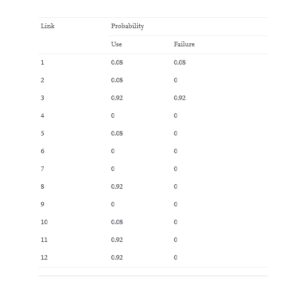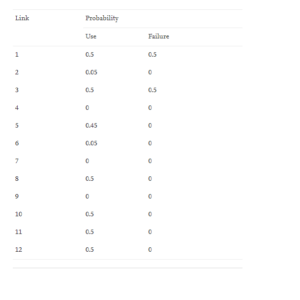Gamifying Network Reliability: Hunting the Nash Equilibrium
The construction of a transport network that keeps the optimization of performance and connectivity reliability at a high standard is a difficult process. Engineers and planners involved in network design are constantly tackling the issue and innovating new possible solutions to expedite the process. A new hypothetical for producing these highly optimized routes as well as developing a new measurement process for network reliability involves gamifying the process into a non-cooperative strategic form.
The game involves two players or entities, an evil entity that as the ability to modify the probabilities that a path has a negative scenario attached to it, as well as modify the costs of paths. The system protector or main player wants to reach their goal with the least cost possible, while the evil entity wants to maximize their cost.
This system explores the idea of Nash equilibrium. This is basically the state where neither player is able to modify the game in anyway to improve their position. The network will be deemed reliable if the expected trip costs are within the acceptable range, even if the users are extremely pessimistic about the state of the networks connectivity.
Some interesting scenarios can be analyzed from this that can help us better understand the state of networks. In this image you can see some of the possible links in the game. The evil entity would surely like link 1 to fail since it has a high cost of failure and would most impede the system protector. However if they did this too often then the link would just be ignored and the player will find a different path. This will result in links with lower worst case scenario costs being used at a higher rate, but also be targeted for a higher rate of failure by the evil entity. After a large subset of data regarding the history of the paths is formed the players are able to both figure out the highest probability path of success.

Another interesting scenario after the links costs and failure chances have stabilized involves the use of more dangerous nodes to get to safer paths. In this example link 2 is actually used even though there may seem to be better options that have no cost at all. This is because link 2 leads to a path that the evil entity would not assume the player would go for since it is gated by a path with a needless cost.

Scenarios like this propagate all through the game process and help us in understanding the different possibilities that can occur in a network. A simple method that helps in generating path is that of successive averages. This basically equates to keeping track of how many times a path resulted in success or a decrease in cost. This can help us then mix and match some paths that have high value links which will further increase our network integrity and help us reach an equilibrium.
In conclusion, this gamified network creation process is a novel approach to the measurement and creation of a reliable network. The procedure is non-parametric, meaning that frequency distributions are not required to assist in the creation of the network. After both users reach their Nash equilibrium the result is a network with high reliability that is not prone to system failures, even if some paths possess a high base cost.
Sources
https://www.sciencedirect.com/science/article/pii/S0191261599000429?casa_token=PCVUA0zLBOAAAAAA:UegQVo2yU4gTDcidncmAh1J3HwM7-ux0dR57bZIQBBZNKcARAp7kTBHUfhqElJf5LmTQrDZ-Pw
https://link.springer.com/chapter/10.1007/11602613_30